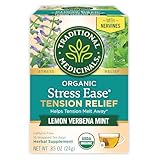This is the question answered by a study made with the collaboration of several medical schools in New York. They used golden hamsters that were inoculated with the SARS-CoV-2 virus.
The best animal model that mimics the human response to SARS-CoV-2 infections is the Syrian golden hamster, and several studies have used them to understand the COVID-19 disease mechanism in humans better. Their findings in the animals were verified when they examined the cadavers of patients who have died with a diagnosis of Long COVID.
Long COVID or Post Acute Sequalae of COVID-19 (PASC)
A subset of people who recover from acute COVID–19 develops continued symptoms longer than four weeks after infection. The common symptoms are shortness of breath, persistent fevers, fatigue, depression, anxiety, and “brain fog.” Brain fog is often described as a chronic impairment of memory and concentration.
The Olfactory System
The loss of smell is one of the first symptoms of COVID-19. That’s because the nerves in the olfactory epithelium that picks up the smell are on the roof of the nasal cavity. From there, the signals are sent to the olfactory bulb and the brain that is right above the roof of the nose.
The image below is the side view of the head as shown from the inside—the olfactory nerves inside the nose signal the olfactory bulb within the intracranial cavity.

Study findings
Their research discovered that the olfactory bulb and olfactory epithelium continued to have inflammatory activity one month after the infection and long after the SARS-CoV-2 viruses were gone.
The inflammation is manifested as the continued activity of immune cells like the microglia and T cells inside the brain. These cells activate genes that produce pro-inflammatory cytokines and interferons that induce inflammation and affect other brain structures.
The microglia, T cells, inflammatory cytokines, and interferon are needed to fight viral infections but, if there are no infections, they can affect brain functions.
Smell affects emotions. We feel happy when we smell something nice. We can get hungry if we smell food or be disgusted if exposed to malodor. That’s because the olfactory bulb is connected to other parts of the brain like the thalamus and the corpus striatum.
Changes in the activity of the corpus striatum are associated with prolonged stress, emotional disorders, and chronic pain states.
The thalamus is a relay station that receives information from the senses like smell to other brain areas. In this study, the thalamus became hypoactive. Thalamic dysregulation may potentially affect “key brain regions that drive emotion, motivation, cognition, sleep, pain, wakefulness, and motor activity.” [1]
Thalamic dysfunction may also explain chronic pain, headache, muscle pains, seizures, sleep, and affective disorders in Long COVID-19 patients.
In the lungs, they also found that the damage to the previously infected lung tissue in COVID-19 persists longer compared to influenza infection.
As a control group, the study also infected a separate group of hamsters with the influenza A virus and another with a “mock infection.” However, the findings of prolonged inflammation in the brain were only found in the SARS-CoV-2 infected animals. And that’s why we don’t see “Long flu.”
My thoughts
The study, SARS-CoV-2 infection results in lasting and systemic perturbations post-recovery, is well made in my opinion and is an interesting read. It is still a preprint but gives us a better understanding of Long COVID.
The absence of early treatment of COVID-19 will most likely increase the risk of developing Long COVID, and early COVID-19 treatment is essential even for the Omicron variant.
- The FLCCC Treatment Protocol for Delta Variant
- Nasal rinse and deep gargle stop viral respiratory infections in their tracts.
Long COVID symptoms are due to chronic inflammation, which is why anti-inflammatories are needed. Ivermectin works as an antiviral and an anti-inflammatory. The FLCCC has the I-RECOVER protocol for Long COVID presented at The I-RECOVER Management Protocol for Long Haul COVID-19 Syndrome.
Don’t Get Sick!
Knowledge about Covid-19 is rapidly evolving. Stay current by subscribing. Feel free to share and like.
If you find value in the articles, please consider donating to show your support.
Related:
- The I-RECOVER Management Protocol for Long Haul COVID-19 Syndrome
- Update to FLCCC Treatment Protocol for the Delta Variant
- COVID-19 Symptoms in the Vaccinated and Unvaccinated
- Update to the I-MASK+ Prevention & Early Outpatient Treatment Protocol for COVID-19
- What should the household do if someone has an Early COVID-19?
- What makes Ivermectin a kick-ass antiviral?
- 13 ways that the SARS-CoV-2 spike protein causes damage
- 16 Ways to Avoid COVID-19
- Nigella Sativa or Black Seed, Black Cumin for COVID-19
- The anti-COVID-19 properties of Quercetin
Reference:
Frere J et al. SARS-CoV-2 infection results in lasting and systemic perturbations post-recovery.
© 2018 – 2022 Asclepiades Medicine, L.L.C. All Rights Reserved
DrJesseSantiano.com does not provide medical advice, diagnosis, or treatment
As an Amazon Associate, I earn from qualifying purchases.
Traditional Medicinals Tea, Organic Stress Ease, Relieves Tension, Promotes Relaxation, 16 Tea Bags
The Republic of Tea, Get Relaxed No.14 Tea for Relieving Stress Tea, 36-Count
TAZO Calm Chamomile Herbal Tea Bags, Caffeine Free Blend, 16 Total Tea Bags
$3.89 (as of June 2, 2025 16:32 GMT -04:00 - More infoProduct prices and availability are accurate as of the date/time indicated and are subject to change. Any price and availability information displayed on [relevant Amazon Site(s), as applicable] at the time of purchase will apply to the purchase of this product.)Discover more from Don't Get Sick!
Subscribe to get the latest posts sent to your email.





























